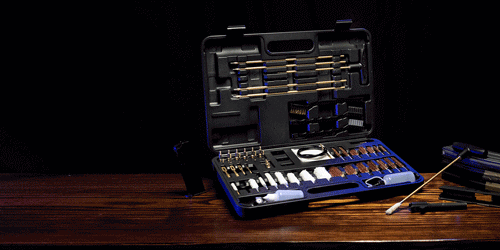Foreword
Tactical gear is designed to enhance the efficiency, safety, and overall performance of individuals in high-pressure environments like law enforcement, military operations, and outdoor adventures. But with so many options on the market, it can be overwhelming to know where to start when building your tactical gear setup. Here are six essential things you need to know about tactical gear to ensure you’re well-prepared for any situation.

Tactical Gear is Built for Durability
One of the primary features of tactical gear is its durability. Whether it’s a tactical vest, backpack, or knee pads, these items are designed to withstand the wear and tear of demanding environments. Materials like 1000D nylon and 500D Cordura are commonly used for their exceptional strength and resistance to abrasions, tears, and water damage. When investing in tactical gear, always look for high-quality materials that are built to last, especially if you plan to use them in rugged conditions like hunting, hiking, or tactical training.
Customization is Key
Many tactical gear items are designed with customization in mind. A prime example of this is the MOLLE system (Modular Lightweight Load-carrying Equipment), which allows you to attach various pouches, holsters, and accessories to your gear. Tactical vests, backpacks, and belts often feature MOLLE webbing, providing versatility and allowing you to adapt your setup based on the mission or activity. Whether you need extra magazine pouches, a hydration pack, or tools for survival, you can build a gear system that fits your exact needs.

Proper Fit is Crucial
Tactical gear is meant to be worn for extended periods, so proper fit is essential for comfort and functionality. For example, a tactical vest should be adjustable to accommodate different body types and allow for a full range of motion without restriction. Quick-release mechanisms, adjustable shoulder straps, and waistbands are features you’ll find on quality tactical gear, ensuring a snug yet flexible fit. If you're building a tactical setup, make sure everything fits properly to prevent discomfort during long periods of wear.
Tactical Gear Offers Specialized Protection
Certain pieces of tactical gear are designed to provide specialized protection in hazardous environments. Ballistic vests and plate carriers are examples of gear that offer protection against bullets or shrapnel, and hearing protection like earmuffs or earplugs helps to guard your hearing during firearm use. In addition, knee and elbow pads are essential for protecting joints from impact during intense movements or when kneeling for extended periods. Always consider your specific needs for protection when choosing tactical gear to ensure you’re adequately safeguarded.

Weight Management is Important
When assembling your tactical gear, it’s essential to balance durability with weight. While you may need to carry various accessories and tools, you don’t want to overload yourself with heavy gear. A tactical backpack or vest should allow you to distribute weight evenly across your body to avoid fatigue. Many tactical vests and backpacks feature ergonomic designs and ventilated backs to enhance comfort and airflow, especially in hot environments. Pay attention to the weight of your gear, as overburdening yourself can affect your performance and stamina during long missions or outdoor activities.
Tactical Gear is Versatile Beyond the Military
While tactical gear is often associated with military or law enforcement use, it has become increasingly popular in civilian and recreational activities such as hunting, camping, hiking, and airsoft. A tactical vest, for example, is not only useful for carrying ammunition but can also be adapted to hold survival tools, first aid kits, and other essential items for outdoor adventures. Tactical backpacks are ideal for hikers and campers, offering multiple compartments for organizing gear like food, water, and clothing. Even tactical clothing like moisture-wicking shirts and durable pants can be beneficial for outdoor enthusiasts looking for clothing that can withstand tough conditions.
Conclusion
Tactical gear is more than just equipment—it’s an investment in safety, functionality, and adaptability. Whether you’re a seasoned operator or someone who enjoys outdoor activities, understanding the key features of tactical gear will help you make informed decisions when building your gear setup. Focus on durability, fit, customization, protection, weight management, and versatility to ensure you’re equipped for any challenge that comes your way.
Are you ready to gear up? Whether you’re looking for a tactical vest, gun cleaning kit, or survival gear, make sure you’re choosing high-quality items that meet your specific needs and objectives.





